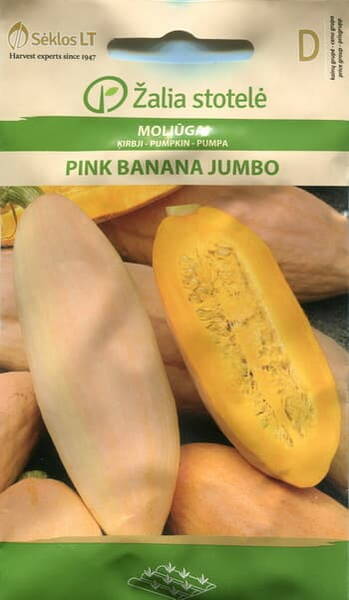Ex Tax: 1.14€
The variety is medium early (95-105 days), high-yielding and very unpretentious. Fruits 65-75 cm long, resembling a banana in shape. The weight of these fruits is 7-9 kg, however!
The rind is thin, the flesh is firm, orange in color and very sweet. Perfectly stored until March. Pumpkin is a light-loving plant. For her, areas are allocated, well lit by the sun, and at the same time, protected from cold winds.
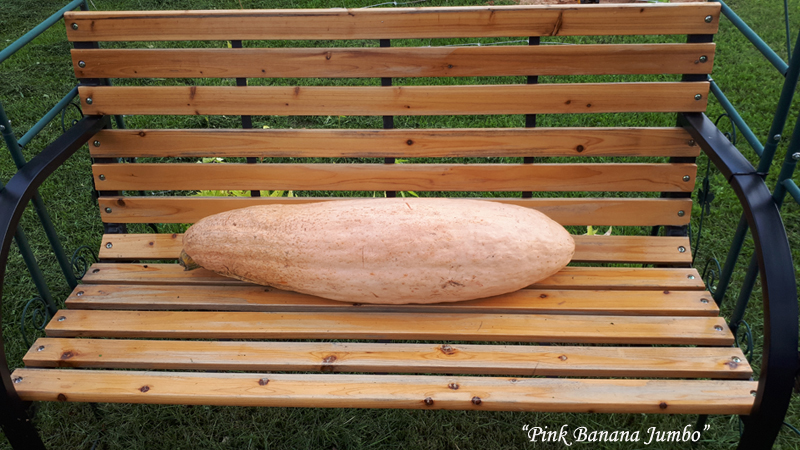
Excellent crafts can be made from such a pumpkin. For example, a sailboat or a submarine.
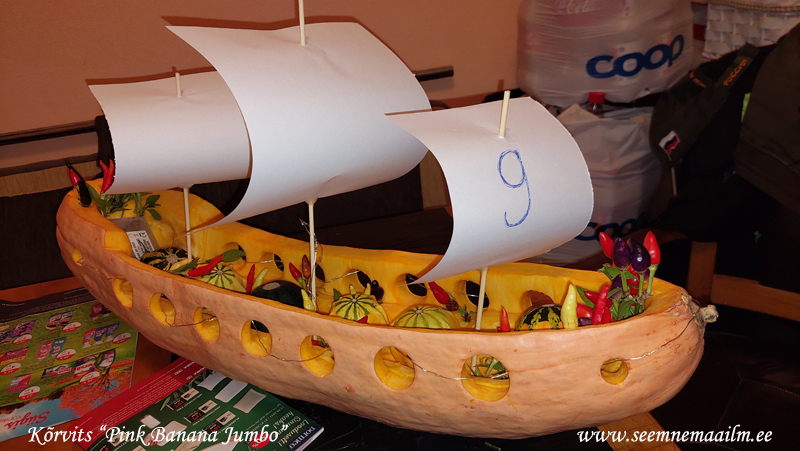
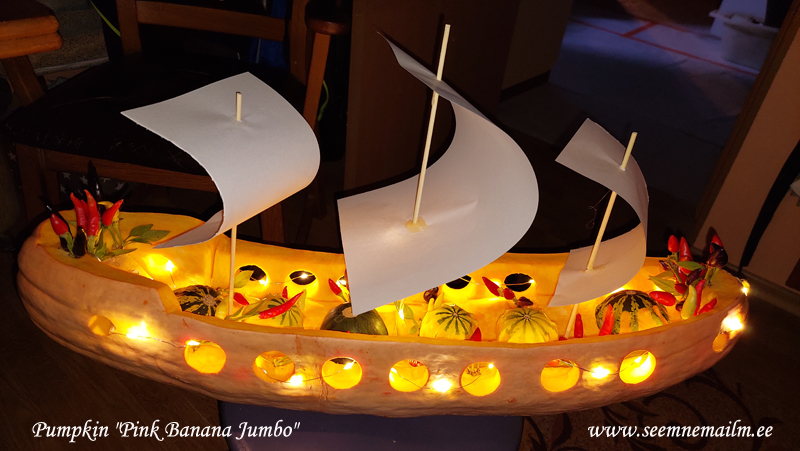
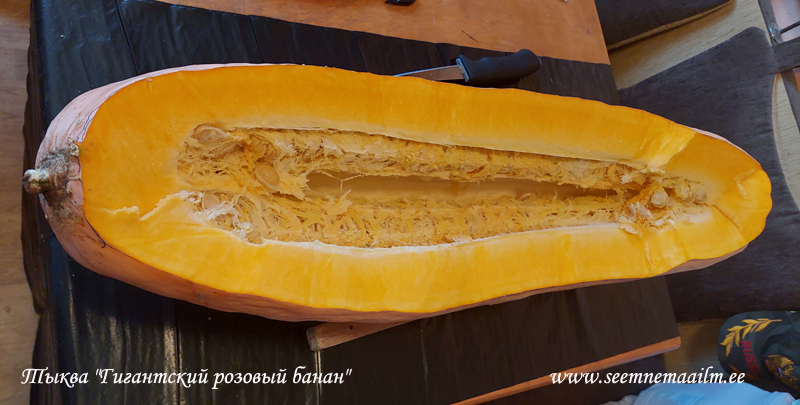
* Pumpkin contains about 90 percent water, a lot of iron-forming pectin substances, sugars, silicic, phosphoric acids, potassium, calcium, magnesium, as well as vitamins B1, B2, B3, PP, E, a lot of provitamin A - especially in fruits with bright orange pulp. In addition to the fact that it is a valuable food product that is well absorbed by the body, it is used in dietary nutrition and is widely used in medicine.
A mask made from raw pumpkin, grated, has a tonic effect on the skin, stimulates blood circulation and improves its elasticity.
Diseases of the gastrointestinal tract.
Pumpkin has a positive effect on inflammation of the large intestine and helps normalize stool during constipation. Cardiovascular diseases It is especially effective to introduce pumpkin into the diet for hypertension, obesity, and metabolic disorders. Almost all people with heart, kidney, and liver disease suffer from this. An infusion of pumpkin seeds relieves pain due to angina pectoris.
Diuretic action.
Pumpkin is used for edema caused by cardiovascular diseases. In these cases, eat pumpkin porridge (preferably with honey), which is eaten twice a day.
Kidney and liver diseases.
Traditional medicine advises for kidney and liver diseases to drink fresh juice from pumpkin pulp (100-200 g per day) or 500 g of grated pulp. Pumpkin juice stimulates and cleanses the kidney and bladder system.
For pyelonephritis and acute chronic cystitis, it is recommended to eat 50 g of pumpkin porridge twice a day.
Peeled pumpkin seeds have a detrimental effect on helminths. They are used against tapeworms and large worms. At home, an anthelmintic from seeds is prepared in two ways:
* Raw seeds are peeled from the hard skin, leaving a thin greenish shell, and ground in a mortar. Then mix them with honey or jam (100 g per 300 g of seeds) and take on an empty stomach, lying in bed, in small portions for an hour. After about three hours, they drink a laxative and half an hour later (regardless of the intestinal reaction) they give an enema. Eating is allowed only after a bowel movement caused by the enema. Dose of seeds for children 3-4 years old -75 g, 10 years old -150 g.
* Pass 500 g of seeds together with the seed coat through a meat grinder, add a liter of water and evaporate in a water bath for two hours, without bringing to a boil. The broth is filtered through cheesecloth. The oil film formed on the surface must be removed. The entire decoction is drunk on an empty stomach for 20-30 minutes. After two hours, take a saline laxative. For children over 10 years old, prepare a decoction of 300 g of seeds; 5-7 years - from 200 g; up to 5 years - from 100-150 g (the amount of water is proportionally reduced). The seeds, which are used as an anthelmintic, can be stored for no more than two years.






